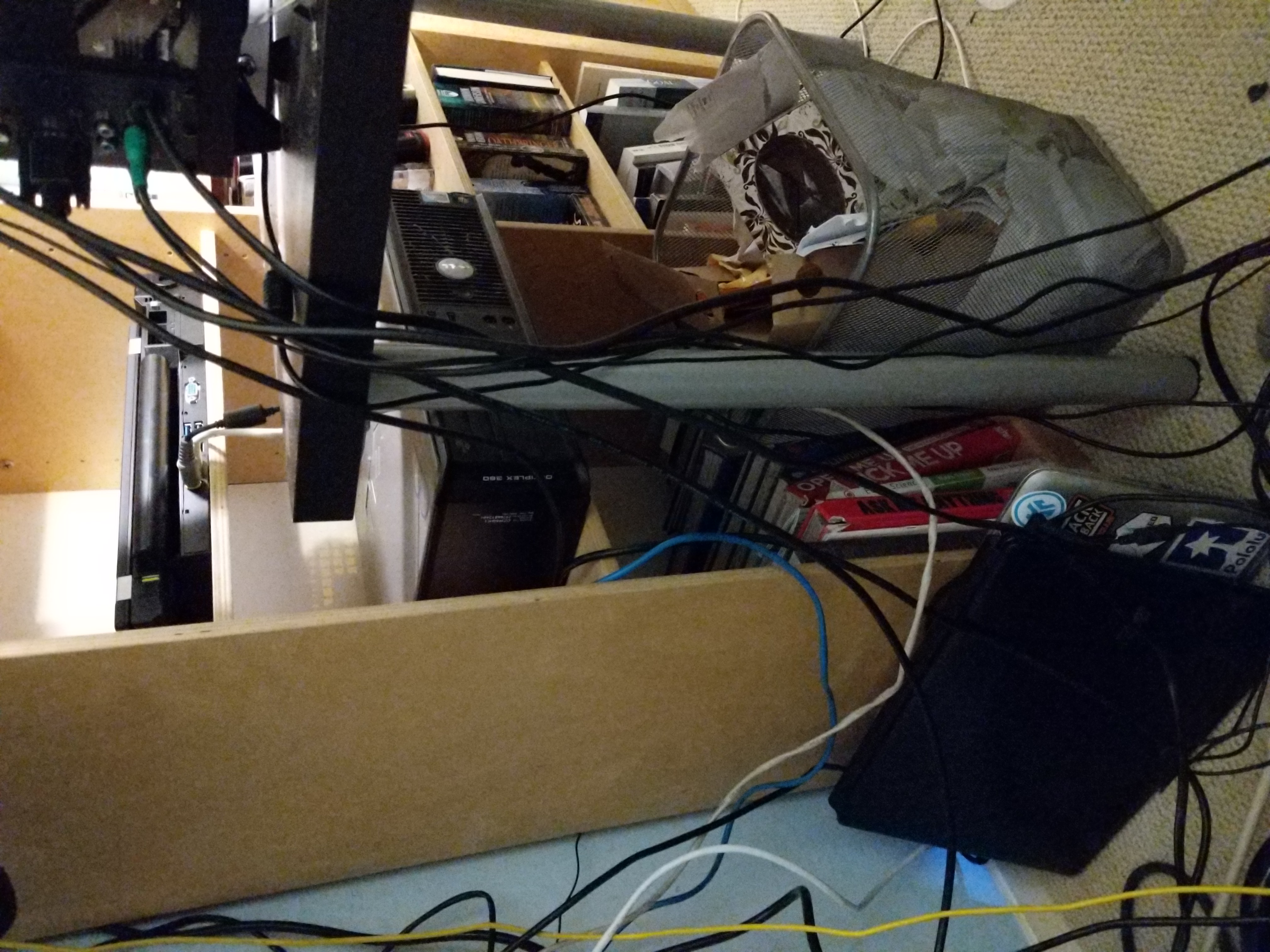A Kubernetes cluster but it's only made of used computers
16-year-old me would be proud
In my last post had 7 things I wanted to do. Well, here’s a summary of everything I did so far. The IaC repo is here and the last commit before I published this article was d18736.
EDIT: It has come to my attention that I’m missing a picture. Anyways, here’s what the cluster looks like.
Monday 1/18: Setting up k8s and an Elastic stack
I woke up awfully early that morning at 5 AM, way earlier than I usually wake up. It was MLK day, so I didn’t have classes, and so I decided to spend the day setting up Kubernetes. I started out with 2 machines, both running Debian Buster Stable:
- The HP Pavilion x360 laptop with a cracked screen that I used to use before
the screen cracked (named
cracktop) - An old Dell Optiplex workstation (that STILL RUNS DDR2 mind you) I got off of
eBay a few years ago for doing something similar (named
deskrap)
I basically spent from 5 AM until 9 PM trying to set up k8s1 the Proper Way :tm: on those two machines and it was painful and it didn’t work for some reason.
But then, I learned about this cool thing called k3s, which is like a much more lightweight version of k8s. That’s perfect, because my machines are all very cheap and have very few resources. Additionally, someone made a very simple setup utility that sets everything up on a remote for you, so I got k3s up around 10 PM. So, I could check tasks #1 and #6 off.
The whole reason I was doing this in the first place was to get an ELK2 stack set up. I only got the E and K before I set up MetricBeat to record system metrics like memory and CPU usage. I got everything set up around 3 AM, then I felt really tired and went to bed. I guess that’s part of #2 (proper centralized logging) checked off.
Tuesday 1/19: Setting up Firefly III and FileBeat
The next morning, I woke up at 8 AM in pain because I did have class that day. Before class started at 9 AM, I set up Kibana to make cool graphs from the MetricBeat data collected overnight.
After class, I went on the the second order of business, which was setting up
those private apps like Firefly III on Kubernetes. I successfully migrated the
persistent MySQL container data off of the VPS and onto deskrap, and after
much finagling with configuration and secrets, it surprisingly worked without
any data corruption.
After bombing an interview with Facebook, I got ahold of my mom’s old Acer
Aspire E1-510 that she didn’t need anymore. It was running terribly slow because
it was bloatware-infested Windows 10 on a HDD. Even after I installed Debian
Buster Stable and k3s and named it crappertop, it was still kinda slow, but
it’s fine; there were 3 nodes on my cluster and quantity > quality here.
At the very end, I got FileBeat running on a DaemonSet pod to forward all container logs into Elasticsearch. I felt satisfied, then went to bed at around 2 AM.
Wednesday 1/20: Expanding the cluster further, then realizing I made a boo-boo
Today, I added another machine to the cluster: a Thinkpad T420 that I got used
off of eBay for a different experiment than deskrap. Once again, I installed
Debian Buster Stable, named the Thinkpad thonkpad, and hooked it up to the
rest of the k3s cluster. I also learned how to deploy containers with Helm
charts, and declaratively deploy Helm charts with Helmfiles.
Sometime in the afternoon, I was trying to set up a VPN system so that I could
access my containers behind authentication. I learned about Wireguard and how
it’s much better than OpenVPN, but when I tried running
apt install -t bullseye-backports wireguard on my machines like the
instructions told me to, it couldn’t find Wireguard. It turns out that Debian 10
uses Linux kernel 4.19, which is too old for Wireguard. So, I had a small
existential crisis before accepting my fate of having to go to all four machines
and reinstall them with a different distro.
So that I don’t have to physically pull the machines onto my desk and use a USB stick as I have been doing, I decided to install Proxmox instead. Proxmox is a hypervisor, so I have to spin up a VM inside of it. However, I’d be slightly cheating; these machines are all so resource starved, I’m just gonna install a single fat VM on each of them and hopefully not experience too much overhead.
At first, I tried setting up OpenSUSE Kubic, which is a distro with k8s
preinstalled for you. Then, I learned about K3OS, and installed that instead
because, once again, I’m rather resource starved. While I was doing that, I was
trying to set up Proxmox on deskrap, but the USB installer kept crashing.
Maybe that machine is just too old/shitty for a modern hypervisor.
Now, as I’m writing this blog post, I’m trying to figure out how to move the
elasticsearch data off of cracktop, which is the last node I have not
attempted to install Proxmox on yet. I will say one thing, though: DevOps is
frustrating. So much YAML-staring and hoping and praying things will work. I
can only hope and pray at this point that the end result will be something I can
be happy about.

